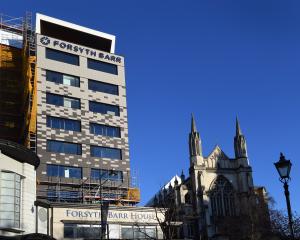Risks to the New Zealand economy have increased and are not being helped by events in Europe, the United States and Australia. Business editor Dene Mackenzie previews a volatile week of economic data.
Risks to the New Zealand economy have increased and while economic growth will remain positive, it will be moderate, the latest NZIER consensus forecasts show.
The New Zealand Institute of Economic Research said the domestic economy would soften while exports would provide an offsetting boost.
Economists did not expect the recent global fears to persist.
The forecasts are complied from a survey of financial and economic agencies and are not NZIER forecasts.
The consensus was the domestic economy not growing as fast as previously thought.
''The outlook for investment has become more cautious, particularly residential construction.
"The construction boom, fuelled mainly by the Canterbury rebuild, will be slower and longer than previous forecasts.''
The Treasury will today release its half-year fiscal update and economists expect another deficit to be forecast.
Craigs Investment Partners broker Chris Timms said the Treasury release should show a weaker picture of the country's books and the forecast return to an operating surplus - only a slim $300 million anyway - could be pushed back by one year to 2015-16.
The NZIER consensus forecasts said gradual growth in the domestic economy would not generate much inflationary pressure.
Consequently, the Reserve Bank would raise interest rates more gradually and less than previously thought.
Consensus forecasts suggested another 1% of official cash rate increases in the next three years, taking the peak to 4%.
Tomorrow, Statistics New Zealand will release the third-quarter current account figures.
The annual deficit is expected to widen from 2.5% to 2.9% of gross domestic product.
Westpac senior economist Michael Gordon said while the quarterly balance had already started to deteriorate in the June quarter, the legacy of last year's high dairy prices meant the annual balance had continued to improve up until June.
''That effect has now come to an end and the annual deficit is set to widen substantially over the next few quarters.''
In seasonally-adjusted terms, the good balance flipped from surplus to deficit in the September quarter, he said.
Export earnings fell, primarily due to lower dairy prices although wood exports were also weaker.
At the same time, there was a strong lift in goods imports, although much of the increase reflected large aircraft imports as Air New Zealand upgraded its fleet.
Mr Gordon also expected a narrower surplus for services trade, with flat exports - although tourist spending had been rising - and a rise in imports as New Zealanders spent more while overseas.
The investment income deficit was likely to have widened further in the September quarter, with growing profits for overseas-owned firms in New Zealand as the domestic economy had strengthened.
New Zealand's economic growth is expected to have increased by 0.8% in the September quarter, leaving the rate of annual average growth unchanged at 3.1%.
ASB chief economist Nick Tuffley said the manufacturing sector was likely to be the largest contributor.
Strong meat processing, in part encouraged by high beef prices, would boost manufacturing.
Strong construction demand had boosted various segments within the manufacturing industry.
''Manufacturing confidence has proved robust over this quarter and a high level of new orders relative to stocks also point to a strong production growth over the second half of the year.''
The Reserve Bank expected ''fairly robust'' growth of 0.9% in the quarter and was upbeat on the medium-term growth outlook, he said.
The central bank did not get too concerned by the quarterly volatility of GDP outcomes and would focus on the underlying picture the GDP presented.












